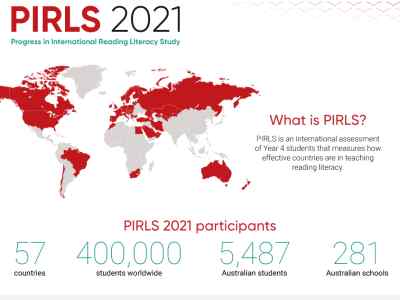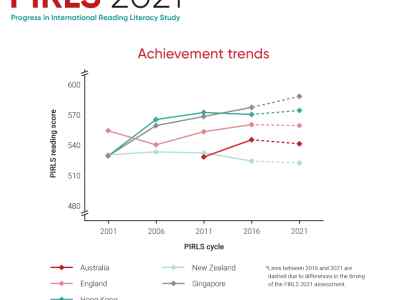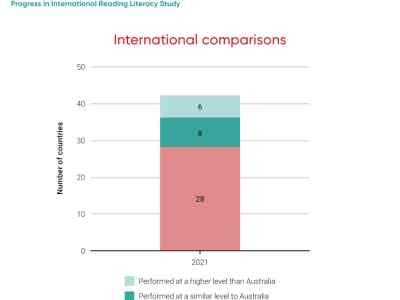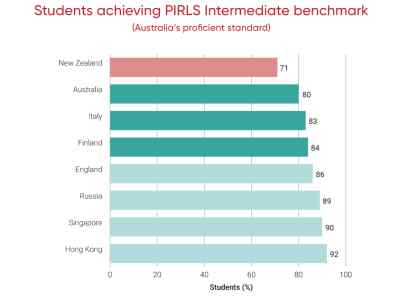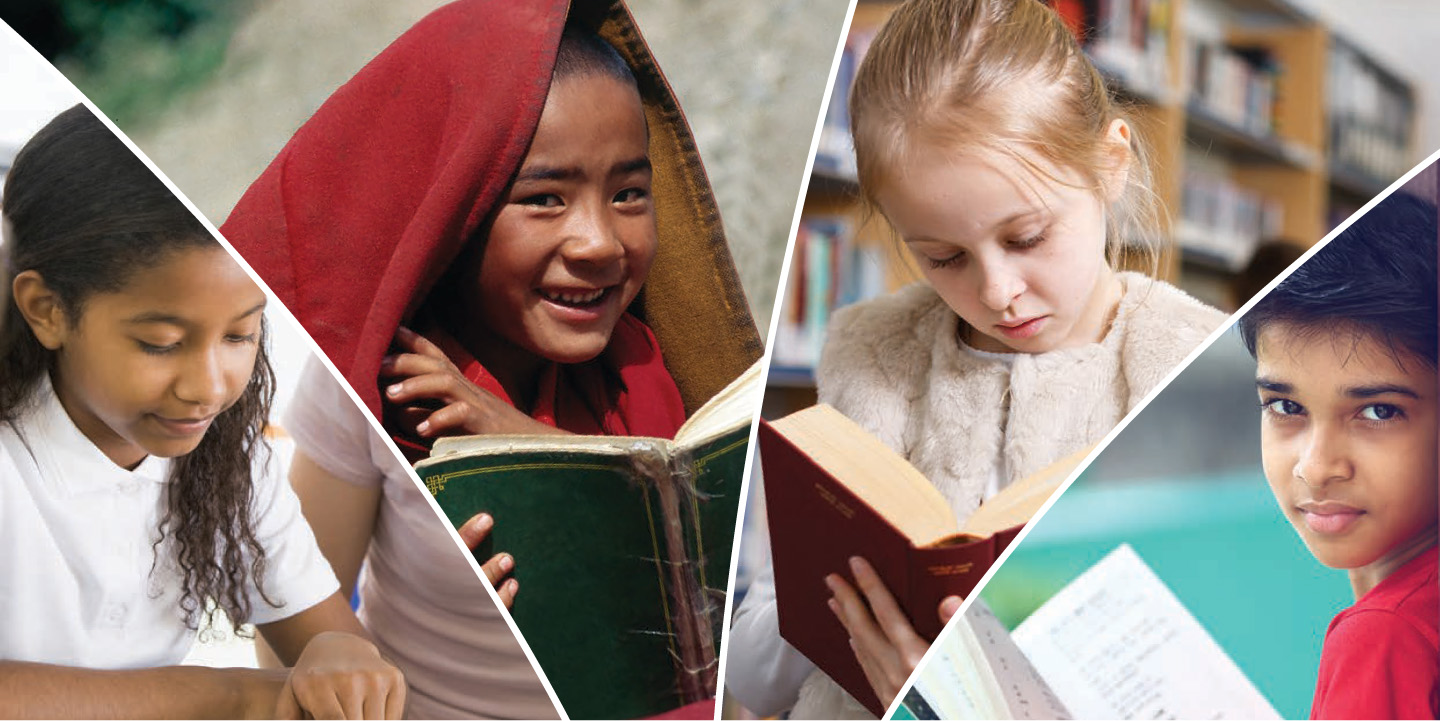
Year 4 students hold their ground in international reading assessment: PIRLS
Media release 16 May 2023 8 minute readAustralian year 4 students’ literacy levels have remained steady during the COVID-19 pandemic, an international study implemented nationally by the Australian Council for Educational Research (ACER) has found.
Results from the 2021 Progress in International Reading Literacy Study (PIRLS), released worldwide today, also showed a decline in Australian teachers’ job satisfaction.
PIRLS has measured trends in year 4 students’ reading literacy achievement every 5 years since 2001. The latest cycle, which was delayed by the pandemic, marks the third time Australia has participated in PIRLS, following participation in 2011 and 2016.
Australia’s average score of 540 points in PIRLS 2021 was statistically similar to the average score in PIRLS 2016 (544 points) and remains higher than the average score for 2011 (527 points). Achievement since 2016 was stable in every Australian state and territory except Victoria, where the average score fell 14 points.
PIRLS National Project Manager for Australia, ACER Senior Research Fellow Kylie Hillman, said the decline in Victoria’s score occurred alongside a decrease in the proportion of higher performing students, however the proportion of students achieving the national proficient standard was stable.
‘Victorian students spent the longest periods of time in remote learning during the pandemic and had only recently returned to face-to-face learning at the time of the 2021 PIRLS assessment,’ Ms Hillman said.
‘Encouragingly, the reading results for this cohort of Victorian students when they took NAPLAN in 2022 were similar to the results for the previous cohort of year 5 students in 2021.’
Australia was one of 38 comparable countries where girls performed better than boys: 77% of Australian boys and 84% of Australian girls met or exceeded the PIRLS Intermediate benchmark (the Australian proficient standard). Large achievement gaps based on First Nations background, school location or socioeconomic status observed in 2011 and 2016 have not closed.
‘Every child deserves the chance to become a competent reader,’ Ms Hillman said.
‘Students in year 4 are at a key transition point in their schooling, moving from “learning to read” to “reading to learn”. Support for students who find reading challenging is essential to prevent them falling behind in other learning areas, as more of their schooling draws on their reading skills.’
Infographic: Australia's results from PIRLS 2021 (PDF)
PIRLS 2021 measured the reading literacy of more than 400,000 students from 57 participating countries and 8 benchmarking entities, including a nationally representative sample of 5,487 Australian year 4 students from 281 primary schools.
COVID-19 restrictions caused many countries to delay assessing students, meaning the results for some countries are not comparable with others. Australia’s national report presents results from 43 countries who assessed students towards the end of year 4, whether in 2020 as originally scheduled, or in 2021 or 2022. Results for the countries that assessed students in year 5 or 6 are not included in the Australian national report.
International comparisons
- Australia’s average reading score for 2021 was statistically higher than the average scores of 28 other countries, including Germany, New Zealand and France.
- Australia’s average reading score for 2021 was statistically lower than the average scores of 6 other countries: Singapore, Hong Kong and England (which tested in English), and Russia, Finland and Poland.
- Australia was one of 8 countries that achieved a similar average score in 2021 compared to 2016, while 21 countries experienced a decline and 3 countries managed to improve their average score.
- 80% of Australian year 4 students met or exceeded the PIRLS Intermediate benchmark (the Australian proficient standard) compared to 90% in the highest achieving country, Singapore, and 92% in Hong Kong – which both tested in English.
- 14% of Australian year 4 students achieved the Advanced benchmark compared to 35% in Singapore, the highest achieving country.
Teaching during a pandemic
PIRLS 2021 collected information from principals about the number of weeks of normal school operations impacted by the COVID-19 pandemic.
Ninety-two per cent of participating Australian students were in schools in which normal instruction was impacted by COVID-19 related restrictions, while the lowest proportions of disruption were recorded in Russia (39%) and Chinese Taipei (23%).
Meanwhile, results from the PIRLS teacher questionnaires show a decline in Australian teachers’ job satisfaction. Almost half (49%) of the Australian students in PIRLS 2021 were taught by teachers who were very satisfied with their profession, down from 58% in 2016, while 10% of students were taught by teachers who were less than satisfied with their profession – an 8-percentage point increase since 2016.
‘Many of the Australian teachers who participated in PIRLS 2021 had just lived through weeks and weeks of remote learning, perhaps fulfilling the roles of teacher and parent at the same time. For Australian students’ average reading achievement to have held ground in such difficult circumstances is a testament to our teachers’ dedication and professionalism,’ Ms Hillman said.
About PIRLS
PIRLS is a project of the International Association for the Evaluation of Educational Achievement (IEA) and is directed by the PIRLS International Study Center at Boston College. ACER manages the implementation and reporting of PIRLS within Australia, with funding from the Australian, and state and territory governments.
The full report, Australia’s results from PIRLS 2021 by Kylie Hillman, Elizabeth O’Grady, Sima Rodrigues, Marina Schmid & Sue Thomson, is available from the Australian PIRLS website: www.acer.org/pirls
Media enquiries:
ACER Communications
+61 419 340 058
communications@acer.org
